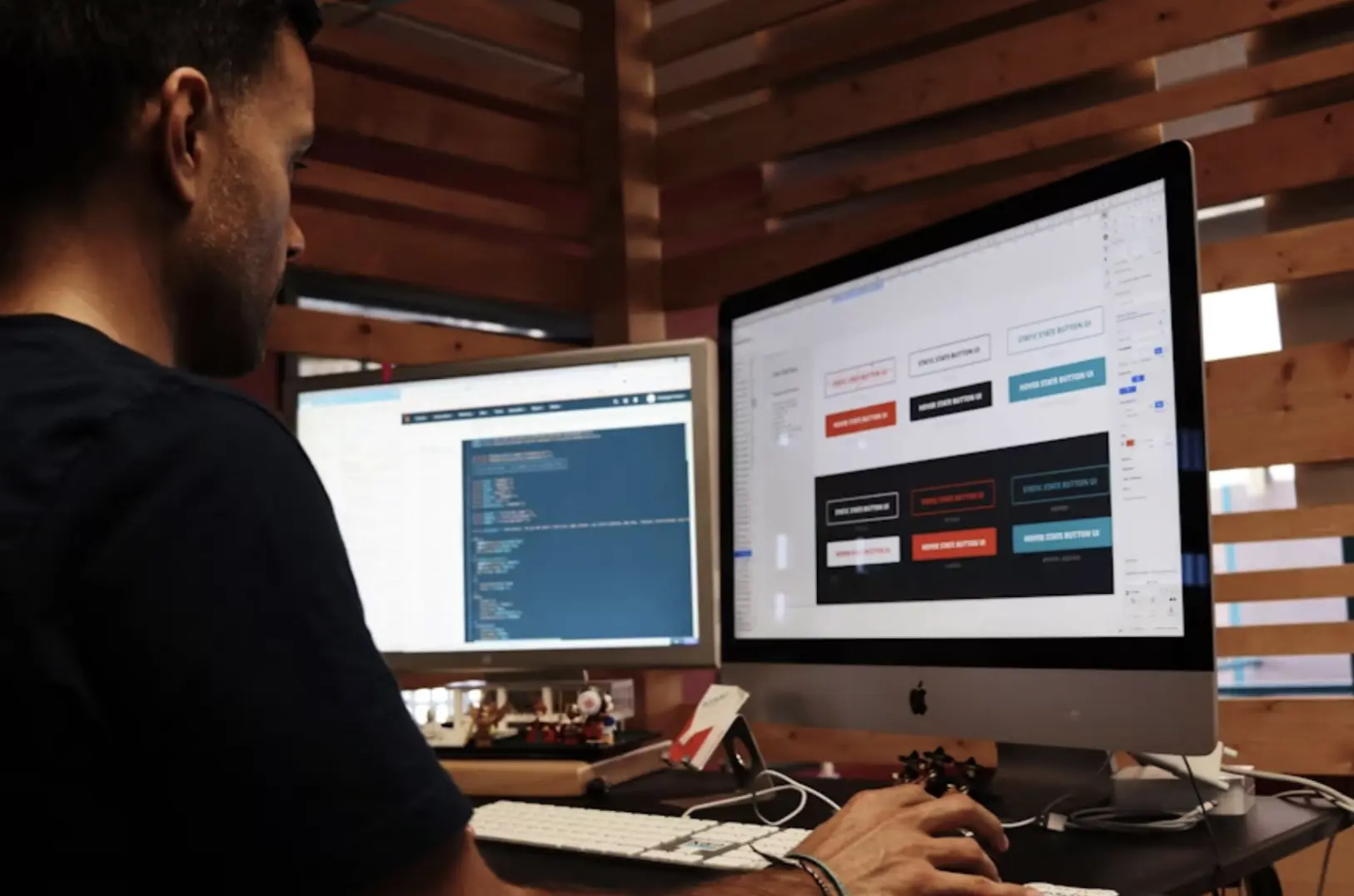Many students dream of building simple or fancy websites but wonder where to begin. They might also face tasks that feel hard, so they seek help from writemypaper. Yet, the road to learning about web design offers many fun steps and creative methods. A well-structured web design course can guide new learners toward cool sites and polished layouts. These days, loads of online resources offer step-by-step lessons for all skill levels. Students can pick from web design programs or best web development courses that fit their style. They can learn web design at their own pace, thanks to helpful videos and hands-on tasks. From quick tutorials to deep dives, these sites give clear examples and practical tips. They even show how to learn website design the right way by building real projects. Many schools also suggest online web design certificate programs that lead to career growth. This blog post will share the top places to begin and gain fresh ideas.
Official Course Platforms
Many learners begin with official sites that share structured web design programs. These platforms often have short quizzes and tasks that help students measure growth. One popular spot is an online academy that covers everything from basic HTML to advanced layouts. They sometimes bundle best web development courses with design essentials, so students get a full picture of website building. Each module introduces real code examples, giving learners a taste of hands-on creation. Instructors also provide feedback to guide beginners through any confusing steps or errors. Some official sites offer a free trial before students commit to a longer plan. That helps them see if the lessons match their style or pace. While paid plans often unlock more depth, even the free segments can teach important skills. These platforms usually have a friendly layout, clear videos, and simple instructions for smooth learning. By following these structured lessons, learners refine skills and build solid confidence.

Large E-Learning Platforms
Massive e-learning sites are another choice for those who want to learn web design. They typically have broad coverage, including coding basics, user interface tips, and design theory. A single platform might host dozens of web design programs, each led by different instructors. Users can sort courses by level, topic, or rating to find the perfect match. Many lessons are in video form, paired with text notes and demo code. This format keeps learning flexible and allows students to pause or rewind whenever needed. Reviews posted by past learners can guide newcomers toward the most helpful or well-structured web design course. Some sites give completion badges or certificates that boost a student’s sense of achievement. There might also be discussion boards where learners talk about progress or share tips. Frequent sales or discounts let people try best web development courses without breaking the bank. With so many classes, it is wise to read outlines and watch previews.
Design Blogs and Magazines
Aside from structured courses, design blogs and magazines are handy for fresh trends and tips. They post articles on color theory, layout techniques, user experience, and many more topics. Readers can learn website design tricks that top professionals use to build modern pages. These sites also highlight real-life examples, showing how experts tackle tricky design challenges. Some focus on free tutorials, while others review the latest tools or share case studies. People can discover helpful plugins, fonts, and style guides for their next creative project. Many blogs also accept reader questions, giving a sense of community and sharing. When looking to learn web design, it helps to see actual photos or code samples. Design magazines often feature interviews with industry leaders who discuss best practices. They may even pinpoint mistakes to avoid, which is valuable for newcomers. With each post, learners gain a deeper understanding of site design methods. Regular reading keeps ideas very fresh and skill-building steady.

Free Tools and Templates
Some learners like to get hands-on quickly, and free design tools help with that. Many sites offer template libraries that shorten the time spent coding from scratch. By picking a layout that suits their style, users can jump straight to customizing. Tools often include drag-and-drop features, color pickers, and basic photo editing. These options let beginners experiment without messing up complicated code or advanced settings. Free plans may limit certain features, but they still offer enough for personal projects. This approach helps students learn web design by focusing on structure, fonts, and images. Once comfortable, they can remove the training wheels and forge their own layouts. People can also examine template code to see how professionals arrange headers, footers, and menus. Such exploration deepens understanding of how design elements fit together on a web page. Many free templates also come with built-in responsiveness, ensuring pages look good on phones. Playing around with resources boosts confidence and sparks design ideas.
Interactive Coding Platforms
For those who love active learning, interactive coding platforms are a good bet. They let students type code right in the browser and see instant changes on screen. This real-time feedback helps people fix errors and grasp how each line affects the layout. Some sites include puzzles, quizzes, and mini-challenges that make coding feel like a fun game. It’s a great way to learn web design while keeping motivation high. Often, these platforms cover HTML, CSS, and JavaScript, guiding users through step-by-step tasks. They provide matching projects that mirror real sites, so students apply new skills right away. Many big providers include best web development courses that go deeper into responsive design or frameworks. Once finished, learners might earn badges or even share their completed tasks with the community. That sense of progress can be a big boost for anyone starting out. Such hands-on methods strengthen problem-solving skills and build an understanding of web design.
Online Design Communities
Sometimes, the best steps forward come from chatting with fellow learners and pros. Online design communities gather people around shared goals and a passion for visuals. Members post questions and feedback, allowing others to comment and suggest fixes. A new designer might share a draft layout, then get tips on color or spacing. These groups can be found on social media sites or specialized design forums. They offer a sense of support that some formal web design programs cannot match. By helping others, students deepen their own knowledge and feel more confident. They might discover new techniques or resources that boost their growth. Even as they learn website design basics, fresh ideas spark from casual mentions or examples. Some members also share links to online web design certificate programs or upcoming design events. These gatherings feel like digital classrooms, yet they are full of lively personalities. From quick critiques to praise, community feedback brightens any learning path for eager designers.
Online Web Design Certificate Programs
Some students want formal proof of their abilities, so online web design certificate programs can help. These short tracks often focus on core skills like layout design, color use, and user focus. Upon finishing, people get a certificate that might impress schools or future bosses. Many providers bundle these credentials with a web design course, forming a structured learning path. The lessons may include recorded lectures, quizzes, and final projects that test each topic covered. Certificates can boost a resume, especially for those looking to break into design roles. They show employers that the learner completed a planned program, not just random tutorials. Prices vary, but many providers offer discounts or monthly payment options. Some schools even grant college credit for certain certificate tracks, adding real academic value. It’s wise for students to check reviews, syllabi, and teacher support before enrolling. Such programs blend theory and practice, preparing learners for real-world design tasks. They build true confidence.
Project-Based Learning Sites
Some websites skip long lectures and go straight to action by giving project-based lessons. Learners might start with a small homepage task, then move to a bigger portfolio site. This approach forces people to learn web design through practice, rather than only theory. Each project might require a different skill, like choosing fonts or placing images. By the end, students see clear proof of their progress in the form of working demos. Some platforms even tie projects to the best web development courses, ensuring solid knowledge of coding basics. Others host group challenges where teams solve design issues and build unique layouts together. This can be uplifting, since collaboration helps folks trade ideas and speed up problem-solving. With each finished site, learners gain pride and see where they can improve. That steady climb often keeps them motivated through tough spots or unfamiliar code concepts. Seeing tangible results keeps learners around enough to discover advanced new features.
Practical Tips and Final Thoughts
Before diving into a web design course, learners should pick goals for their projects. Maybe they want a personal blog, a tiny shop, or a bright portfolio page. Clear targets help them focus on the parts of design that matter most. They should also set aside time each day to practice and review lessons. By staying consistent, students slowly build skill and gain a natural feel for layout. Some prefer quick videos, while others dive deep into readings or best web development courses. The key is to try different approaches and see which method clicks best. Learning can also be less lonely with a friend or a study group. Sharing wins or fails helps people grow and keep spirits high. Push yourself, ask for help, and remember that patience leads to clear results. There is no single path to learn web design, so stay open to new lessons. With steady progress and curiosity, students can create sites that match their dreams.

